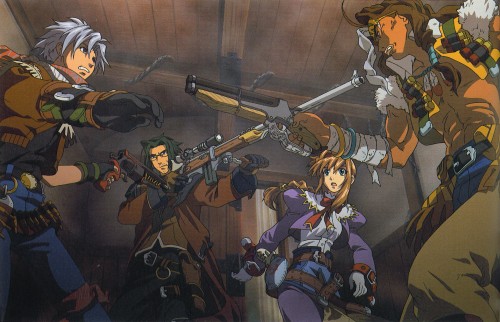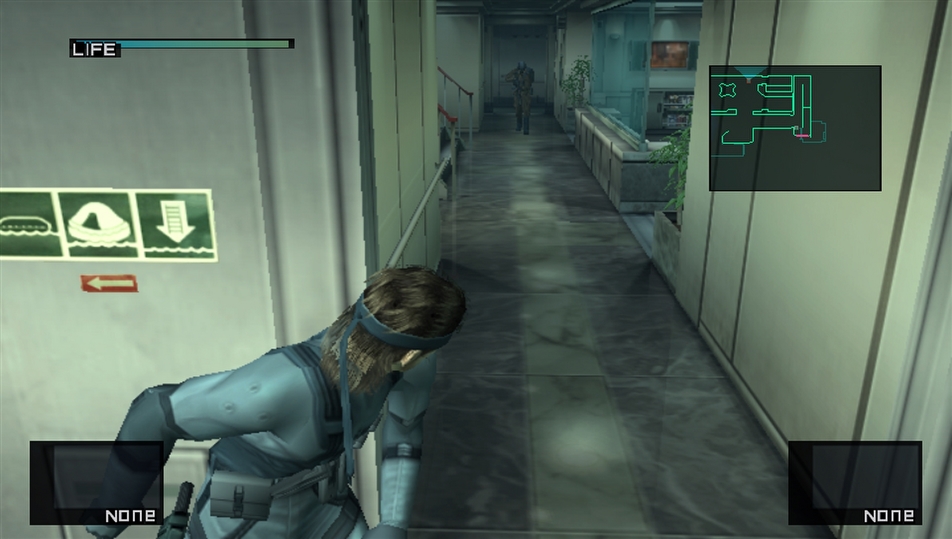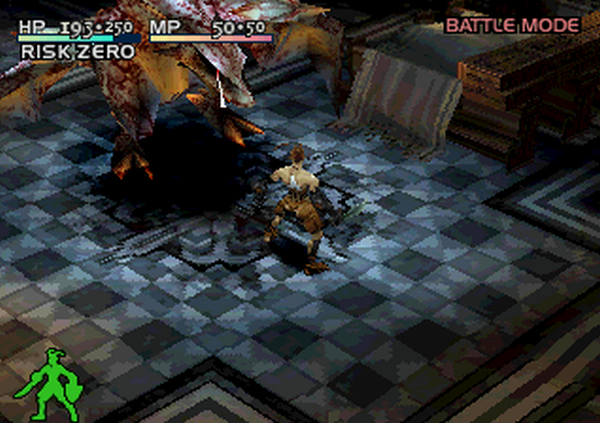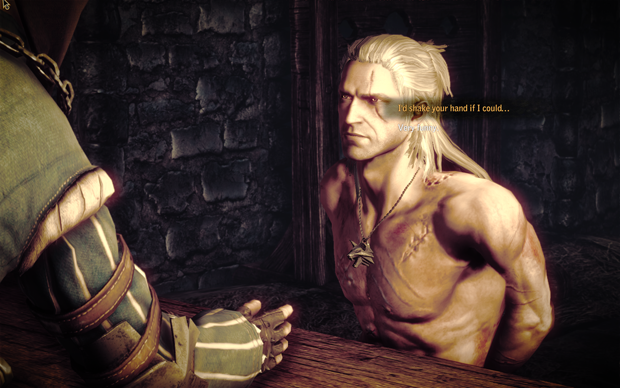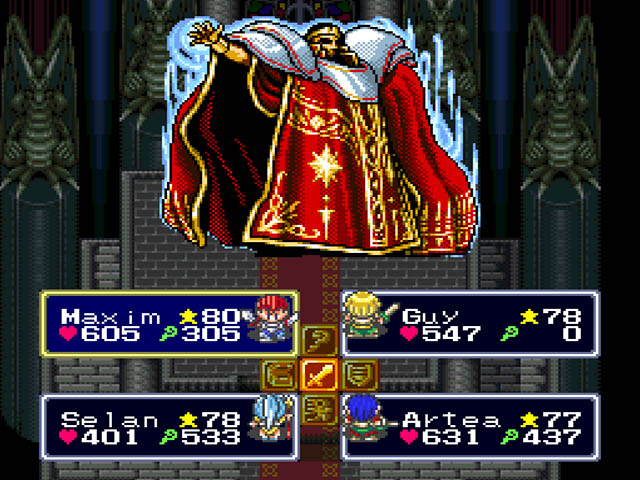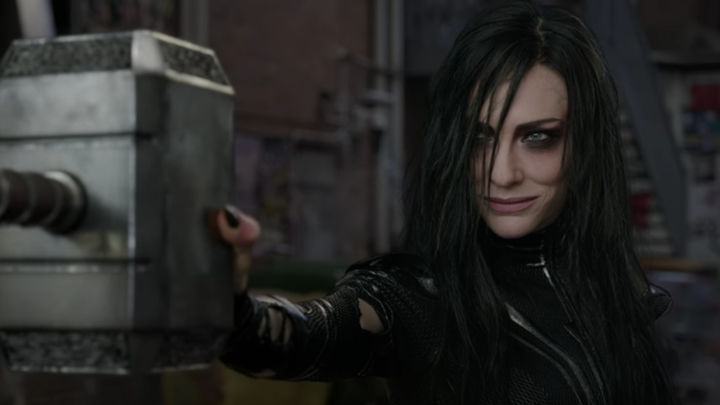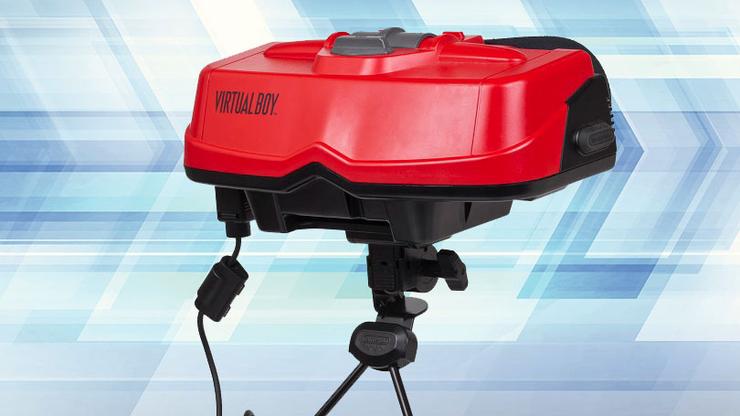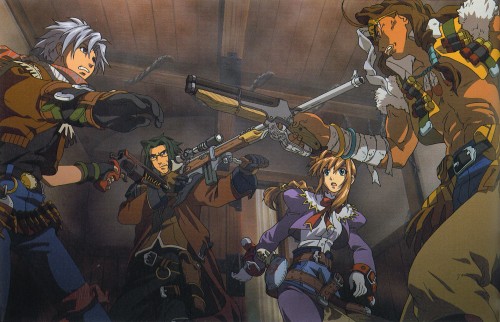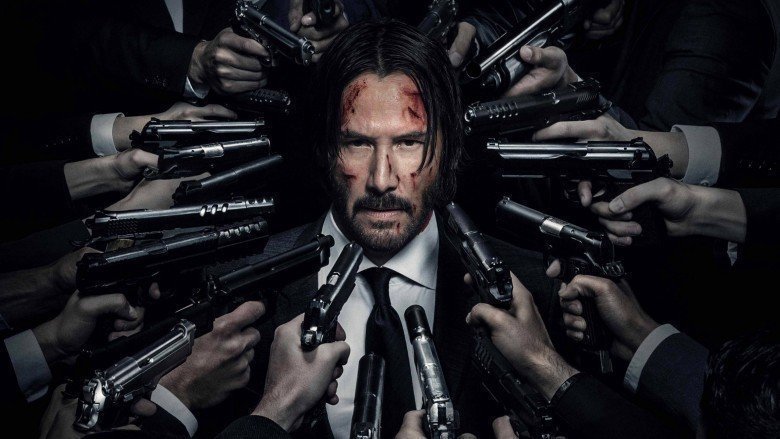
by Stone Marshall | Nov 19, 2017 | Awesome Book News, Free, Intro, Minecraft News, Minecraft questions, news, parent-news, State of Stone, Stone Marshall Book News, Stone Marshall Books, Stone Marshall Club, Stone Marshall Minecraft Adventures, Uncategorized |
From sci-fi originals to kid-friendly fare, hard-hitting dramas to superlative horror, this year has already delivered a bumper crop of excellent flicks for film lovers. We’re still just a few pages into the calendar, but let’s take a quick look back at the best movies of 2017 (so far).
The LEGO Batman Movie
Trying to follow up The LEGO Movie was a tough proposition, and spinning off Will Arnett’s Batman could easily have backfired. The results could’ve faltered under the pressure of making this version of the character likable or interesting enough to carry a film, or buckled under the weight of all those DC Comics in-jokes and gags. Happily, The LEGO Batman Movie turned out to be one of the best family-friendly movies in ages, while packing in enough smart comic stuff to keep Batman geeks coming back for repeat viewings. Fun, wacky, and a rollicking adventure in the wild world of LEGO, the movie’s been showered with praise from critics who are calling it one of the best animated offerings of the year—and one of the best Batman movies ever.
John Wick Chapter 2
More than 15 years after The Matrix saga began, Keanu Reeves has reinvented himself as an action hero for a whole new generation. This sequel to his surprise 2014 action hit John Wick is a bone-crushing, R-rated thrill ride that finds Reeves’ namesake hitman pulled out of retirement to take on a shady international conspiracy. It might sound complicated, but it’s mostly just a setup for Reeves to kick a bunch of bad-guy butt. Critics say the film feels like a throwback to the simpler days of action movies, focusing on practical effects instead of distracting CGI. It’s also one of the most stylish films of the year, regardless of genre.
Patriots Day
Director Peter Berg’s dramatic retelling of the real-life 2013 Boston Marathon bombing stars Mark Wahlberg—making his third fact-based thriller with Berg—as a police sergeant thrust into the middle of the chaos and the ensuing investigation. Critics have praised Patriots Day (which also opened in limited release late in 2016) for managing to tell a compelling story without straying into exploitive tropes, and while some reviews question whether it’s too soon to bring this particular story to the cineplex, there’s no denying it finds Berg and Wahlberg in their wheelhouse.
Split
Pretty much no one saw it coming, but M. Night Shyamalan’s surprise hit Split is among the best films of the year. The taut thriller follows a group of young women abducted by a man (James McAvoy) with multiple personalities—whose struggle for dominance threaten to upend his plans…or make things even worse for his captives. Critics have hailed it as an unexpected return to form for Shyamalan, and a big part of the film’s buzz comes from its surprise twist (spoiler alert!) connection to his acclaimed Unbreakable. And it isn’t just the shocking final act that makes Split so much fun—McAvoy ties it all together with a tour de force performance.
The Founder
This true story tale follows Ray Kroc (Michael Keaton) and the twisty real-life saga of how the McDonald’s fast-food chain was born. For those who’ve never stopped to consider the Big Mac’s origin story, it’s a surprisingly timely tale that delves into the dark side of the American Dream. Critics have praised Keaton for his multifaceted performance, and while some have noted that the movie might have dug a little deeper into its questions of capitalism, it all goes down about as easy as one of those Golden Arches meals.
Get Out
Point to a February horror movie on your average release calendar, and you’re probably singling out a pretty lame film—but there’s always an exception, and this year, Get Out is it. Helmed by debuting feature director Jordan Peele (of Key & Peele fame), this horror/comedy hybrid follows the increasingly frightening misadventures of a young man (Daniel Kaluuya) venturing into the suburbs to meet his girlfriend’s (Allison Williams) parents. They have no idea he’s black, which feeds into the film’s creeping tension…but of course, that’s only the start. Thrilling as it is thought-provoking, this is one 2017 movie no film buff will want to miss.
Logan
Comics fans have loved Wolverine for decades, partly because the character has a dark, violent streak a mile wide—and although Hugh Jackman has played the X-Man just about perfectly, none of those outings have truly captured the grueling angst and berserker rage that help make his saga so poignant. That all changes with Logan, a loose adaptation of the Old Man Logan comics arc that finds our hero in a grim wasteland largely devoid of mutants, called upon to defend a mysterious girl (Dafne Keen) targeted by a passel of bloodthirsty villains. A brooding Western road trip with claws, Logan’s been hailed by critics as a fitting farewell for Jackman—and perhaps the best entry in the X-Men franchise to date.
Kong: Skull Island
It’s been a long time coming, but Warner Bros. and Legendary Pictures knocked it out of the park with the new-look version of King Kong in Skull Island. The story follows a team of explorers and soldiers as they head off to a mysterious island that turns out to be the home of giant monsters. Critics have been raving about the film, which stars an A-list cast led by Tom Hiddleston, Samuel L. Jackson, John Goodman, Brie Larson, and John C. Reilly, praising the aesthetics of the 1970s setting and saying it strikes the perfect balance of big stakes, dumb fun, and wildly enjoyable action. It also looks to set the stage for an eventual crossover with Godzilla that’ll set up the studio’s MonsterVerse. Skull Island is only the beginning.
Guardians of the Galaxy Vol. 2
Guardians of the Galaxy sent the MCU soaring into the Marvel Comics cosmos in 2014—and racked up some suitably sky-high box office grosses along the way, along with a slew of positive reviews. It was obviously only a matter of time before the gang returned for another outer space adventure, and while the reviews haven’t been quite as kind for Guardians of the Galaxy Vol. 2, it’s still a solid follow-up—and a wildly entertaining ride in its own right. The original cast is back in action for a storyline that sees Star-Lord (Chris Pratt) faced for the first time with his absentee dad…who just turns out to be the godlike Celestial known as Ego, the Living Planet (Kurt Russell). As he did with the first installment, writer-director James Gunn has fashioned a perfect delivery mechanism for blockbuster thrills balanced against belly laughs and genuine emotion. Bring on Vol. 3 already.
Beauty and the Beast
Disney’s winning streak with live-action spins on their beloved animated classics continues with Beauty and the Beast. Everyone loves the tale as old as time, but everyone’s also already seen it—posing a challenge for director Bill Condon’s update, which uses a lot of the same music and is even, in some spots, essentially a shot-for-shot remake of its predecessor. How did this Beauty overcome its beast of a stumbling block? Partly by rounding up an incredible cast, with a live-action contingent led by Emma Watson and a crew of stellar voice actors that included Emma Thompson, Ian McKellen, and Ewan McGregor. And then there are the resplendent visuals, which add a layer of painterly detail to a timeless love story that captured filmgoers all over again—and shattered box office records along the way.
Fate of the Furious
The Fast and Furious franchise lost a major star when Paul Walker passed away during the filming of Furious 7. And while Walker’s death added a poignant note to that film’s final act, it also left a major question mark hovering over the future of the series—one partially addressed by Fate of the Furious, which sends the saga hurtling into the post-Walker era. Continuing the series’ pivot away from street-racing action and toward heist capers fueled by thrilling (and ever more marvelously absurd) set pieces, Fate amps up the blockbuster destruction—as well as the soapy melodrama tying the ensemble cast together—with a story that sees the gang scrambling to understand a bizarre betrayal by leader Dom (Vin Diesel). Rumor has it the franchise could be nearing the finish line, but don’t worry: it looks like there’s a spinoff in the works, built around Dwayne Johnson and Jason Statham’s characters.
Wonder Woman
After 75-odd years of whooping bad guy butt in the comics pages (and one supporting appearance in Batman v Superman: Dawn of Justice), Wonder Woman finally got her shot at solo blockbuster glory with 2017’s Wonder Woman—just in time to either make or break the emerging DC Extended Universe. No pressure, right? Happily, Wonder Woman did everything it needed to and then some, serving as an effective origin story as well as a superhero adventure that stood on its own as a standalone experience while continuing to lay the groundwork for the DCEU’s big team-up Justice League picture later this year. The reviews have been almost universally positive, and audiences have turned out in droves. Could we have a real battle for superhero supremacy at the box office between Marvel and DC?
Colossal
Directed by Nacho Vigalondo (Timecrimes), Colossal is one of the strangest giant monster movies ever made, and boy, is that really saying something. In this off-the-walls sci-fi flick, Anne Hathaway plays an alcoholic named Gloria who finally goes on one bender too many. Her boyfriend (Dan Stevens) kicks her out of their apartment, and she winds up back in her hometown, reconnecting with her bar-owning childhood friend (Jason Sudeikis).
So far so normal, but things get weird when Gloria drunkenly stumbles across a playground early one morning. The moment she steps into the tiny park, a gigantic creature materializes in Seoul, South Korea—a creature that mimics Gloria’s every move. Initially enamored with her new power, Gloria soon realizes her inebriated antics are going to get people killed, so she resolves to get her act together…and that’s when Colossal takes a hard left turn into unexpected territory, sending Gloria towards a final showdown with all the kaiju-sized demons in her life.
We don’t want to say much more about the plot—you’ll thank us later—but seriously, the film is worth watching for Anne Hathaway alone. Gloria is one of her finest performances, a role that allows her to run a range of emotions from insecure self-loathing to confident rage, with a bit of everything in between. Plus, the plot is so insane there’s no way you can sit this one out. Original, emotional, and surprisingly poignant, Colossal is the kind of movie that will leave you whispering to yourself, “Oh my God…zilla.”
Alien: Covenant
Ridley Scott’s Prometheus was a pretty divisive movie when it hit theaters in 2012, and while the follow-up, Alien: Covenant, has its own detractors, we can say this about Scott’s third installment in the xenomorph franchise: it plays up the franchise’s horror element, there’s a ton of gore, and we get two Michael Fassbenders for the price of one. Seriously, what more does a sci-fi fan need?
Set in 2104, just a few years before the original Alien, this sequel-prequel follows the crew of the Covenant, a spaceship carrying 2,000 sleeping passengers, all waiting to wake up in a new world. Unfortunately, an accident along the way kills the captain, and when the new commander (Billy Crudup) picks up a strange transmission coming from a mysterious planet, he decides to change course.
Obviously, this guy has never seen a horror movie before, and despite the protestations of our Ripley-like protagonist (Katherine Waterston), the captain lands the ship—and soon, the crew finds themselves besieged by angry aliens. Admittedly, it’s nice to see the xenomorph back in action, but pretty much everyone agrees that this is Michael Fassbender’s movie. The actor is playing two androids here—one subservient, one Luciferian—and he steals the screen every time he gets into a debate with himself. Couple Fassbender’s presence with the facehuggers and the chestbursters, and it’s easy to see why critics are saying Alien: Covenant is the third-best film of the franchise.
Okja
From the brilliantly bizarre mind that brought us The Host and Snowpiercer comes a South Korean fable featuring a bubbly Tilda Swinton, a mustachioed Jake Gyllenhaal, and a giant CGI pig. This is the wild world of Okja, a film that starts off feeling like a G-rated kid’s adventure and ends up inside an R-rated slaughterhouse. It’s funny, shocking, and darkly cynical—exactly what you’d expect from director Bong Joon-ho.
Released through Netflix, Okja tells the story of a young girl named Mija (An Seo-hyun) who’s friends with a hippo-like “super pig” named, well, Okja. Together, the duo run, play, and love life together until the porker is captured and taken to New York City. Unbeknownst to Mija, her best friend actually belongs to the all-powerful Mirando Corporation, a business run by evil twins (both played by Swinton). Okja is their genetically modified creation, and they plan on turning the poor pig into the tastiest, most eco-friendly pork chops on the planet.
Of course, when Mija finds out what’s really going on, she sets out to rescue her buddy with the help of some bumbling animal rights activists (led by Paul Dano). Written by journalist Jon Ronson, Okja also features names like Giancarlo Esposito, Lily Collins, and as we’ve already mentioned, a wildly over-the-top Jake Gyllenhaal. And in true Bong Joon-ho fashion, the film has quite a lot to say about the dark side of capitalism. Plus, it’s such a powerful film that by the time it’s over, even Ron Swanson would reconsider ordering a steak.
Baby Driver
With its eclectic soundtrack and insanely impressive stunts, Edgar Wright’s Baby Driver is one of the most exciting films of 2017. This souped-up action flick stars Ansel Elgort as a young crook named Baby, a kid who works as a getaway driver for a smarmy crime boss named Doc (Kevin Spacey). Suffering from tinnitus, Baby drowns out the constant droning with an incredible collection of iPods, and while he’s grooving to the tunes, Baby weaves in and out of traffic, dodging cars and avoiding cops by doing 180s in alleyways.
But Baby’s life gets a little more complicated when he falls head over heels for a beautiful waitress named Debora (Lily James). He wants to go straight, but Doc wants him for another job, one that involves working with a who’s who of psycho killers (played by Eiza Gonzalez, Jon Hamm, and a wonderfully deranged Jamie Foxx). Needless to say, the robbery doesn’t go as planned, and Baby is forced to take a stand to save everything he loves.
Thanks to the movie’s emphasis on music, the action scenes are choreographed to the tunes on Baby’s iPod, with Edgar Wright using songs like “Tequila,” “Bellbottoms,” and “Hocus Pocus” to great effect. Crazier still, almost every stunt you see is real. With its dance-like action and its super cool characters, Wright’s sixth feature film is like a mashup between Singin’ in the Rain and Walter Hill’s The Driver, which means it’s got a little something special for everyone.
War for the Planet of the Apes
The conclusion to one of the best trilogies ever made, War for the Planet of the Apes expertly blends the book of Exodus with Apocalypse Now, resulting in a brutal Old Testament-POW story. In the fiery aftermath of the previous film, Caesar (Andy Serkis) has led his followers into the mountains, hoping to escape the wrath of man. But Caesar knows his apes can’t hide in the hills for long, so this primate Moses plans on leading his people to a new promised land, where they can avoid any future conflicts.
Unfortunately, humans aren’t quite as humane as apes. Led by a mad colonel (Woody Harrelson) on a mission, a group of soldiers attack Caesar’s colony, killing several of his loved ones. With his trusted allies by his side, Caesar sets out to get revenge, but instead, he finds himself on a quest to free his troop from a fortress-like prison. This sets up a Bridge on the River Kwai-style showdown between Caesar and the Colonel, escalating in an escape attempt and brutal battle that might end with the world becoming a planet of…well…you know.
Directed by Matt Reeves, War for the Planet of the Apes is the perfect ending to an amazing trilogy, one that features yet another show-stopping performance from Andy Serkis. The English actor has created a character of Shakespearean proportions, and some believe he should get an Oscar nod for his motion capture performance. Really, the only bad thing about War for the Planet of the Apes is saying goodbye to Caesar.
Spider-Man: Homecoming
If you were to visit Rotten Tomatoes, you’d probably notice that, critically speaking, Spider-Man: Homecoming is tied with The Avengers. Both films share a whopping 92 percent approval rating—an impressive feat, but it shouldn’t come as much of a surprise. After all, Homecoming is one of the most charming and entertaining films to ever swing its way into the MCU.
Starring Tom Holland as Peter Parker, Spider-Man: Homecoming follows the wannabe Avenger as he tries to fight crime and navigate high school at the same time. Even with the help of his good friend Ned (Jacob Batalon), he’s still having a hard time impressing the girl of his dreams (Liz Allan). Of course, things get even more complicated when an honest-to-goodness supervillain shows up. Known as the Vulture (Michael Keaton), this winged baddie is the ultimate thief, and if Peter can bring him to justice, it could be his ultimate ticket into the Avengers.
Directed by Jon Watts, Homecoming even won over Marvel haters thanks to its John Hughes-high school vibe. And all that upbeat energy was largely thanks to Tom Holland, who’s kind of the perfect Peter Parker. Playing across from Zendaya, Marisa Tomei, and Robert Downey Jr., Holland more than proved he deserves to be a member of the world’s mightiest heroes, and we can’t wait to see him catching bad guys like flies in 2018.
Dunkirk
Without a doubt, Dunkirk is one of Christopher Nolan’s greatest achievements, right up there with Inception and The Dark Knight. In fact, you could make an argument that Dunkirk is his greatest film—some have—which is a testament to the nail-biting power of this World War II thriller.
Shot mostly with 65mm film on IMAX cameras, Dunkirk tells the story of a real-life retreat in 1940. Roughly 400,000 Allied troops were trapped on a French beach, completely surrounded by the Nazis, and the only thing keeping our heroes from home was the English Channel. Unfortunately, the beach was too shallow to accommodate military-sized vessels, so English civilians sprang into action, sailing to Dunkirk in their yachts and fishing boats.
It was an incredible historical moment, and Nolan does a masterful job of capturing the suspense. In true Nolan fashion, the story is divided into three interwoven narratives, all of which have their own unusual run times. Story number one takes place on the beach and lasts a week. Story two takes a day and follows a civilian (Mark Rylance) as he sails for Dunkirk. Finally, story three takes place over the course of an hour and follows the RAF pilots (led by Tom Hardy) as they defend the men trapped on the beach below.
Despite the time differences, the stories are all connected and even shed new light on the same events. And like a master, Nolan uses these three interlocking tales to put audiences in the middle of the battlefield. We feel like we’re actually there, trapped on the beach, desperately waiting for a boat to show up and take us home.
Atomic Blonde
What would happen if you combined Imperator Furiosa with John Wick? You’d probably get Lorraine Broughton, British superspy and badass hero of Atomic Blonde. Directed by David Leitch—who not coincidentally co-directed John Wick—this neon thriller takes place in the final days of the Cold War. The Berlin Wall is about to go down, but that doesn’t mean the cloak-and-dagger business is all done.
To the contrary, Broughton (Charlize Theron) is sent to Germany to retrieve a stolen list that contains the names of undercover spies. The list has fallen into the hands of the Soviets, and Broughton will have to bash a few skulls in her quest to discover the document. Along the way, she butts heads with an out-of-control James McAvoy and makes love to a sexy Sofia Boutella, all while “Cat People,” “Father Figure,” and “99 Luftballons” play in the background.
But really, the plot isn’t important. In fact, as the film goes on, it just gets more and more complicated. What is important is the crazy fight choreography: Broughton beats up dudes using everything from ropes to cooking pots, all while wearing the most stylish clothes imaginable. More impressive still, that’s really Theron throwing those haymakers. The actress did her own stunts for the film, adding a touch of realism to the brutal battle scenes.
In short, don’t expect something with the intellect of Tinker Tailor Soldier Spy. Instead, prepare to watch Charlize Theron bash somebody in the face with a baton, which is the reason movies were invented in the first place.
It
Andy Muschietti’s It isn’t the first adaptation of Stephen King’s weighty novel. In 1990, Tim Curry made horror history by playing Pennywise the Dancing Clown, the Derry demon with a fondness for floating. But Curry’s version played on the TV network ABC, and now that Bill Skarsgård is wearing the makeup, are a lot darker and bloodier.
The first of a two-part tale, It tells the story of “The Losers’ Club,” a group of outcast kids who are beaten by bullies and plagued by horrible home lives. But when they’re together, these kids are pretty powerful—and they need as much strength as possible when they find themselves facing a flesh-eating clown. Led by Bill (Jaeden Lieberher), a boy who lost his little brother to Pennywise’s evil appetites, the Losers eventually head into the sewers to end the evil that’s been plaguing their town for years.
While you’ve got to give Tim Curry credit, Skarsgård takes the nightmare fuel to a whole new level. Of course, you can have the world’s most evil monster, but if you don’t have sympathetic heroes, then audiences just won’t care. Fortunately, the Losers are likable characters played by solid actors, and according to the critics, they truly have a bond with one another. Under all the gore and grime, behind the monstrous apparitions and evil sinks, there’s an actual heart beating in this movie…one that a creepy clown wants to tear out and eat.
These are the best movies of 2017 so far
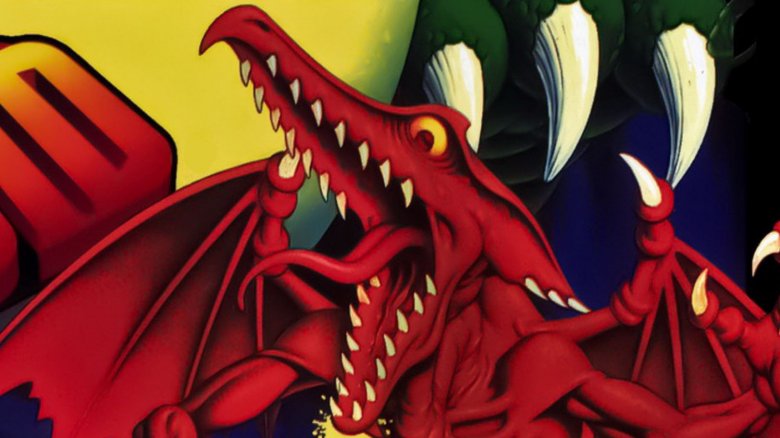
by Stone Marshall | Nov 19, 2017 | Awesome Book News, Free, Intro, Minecraft News, Minecraft questions, news, parent-news, State of Stone, Stone Marshall Book News, Stone Marshall Books, Stone Marshall Club, Stone Marshall Minecraft Adventures, Uncategorized |
There are normal bosses, there are difficult bosses, and then there are impossible bosses. We mean that literally. Every once in a while, a video game throws an enemy at you that you simply can’t beat—at least, not without modding the game or cheating. Your actions don’t matter. No matter what you do, you’re going to lose.
But why? Sometimes, a character needs to stick around to progress the plot. At others, developers want to drive home just how powerful a certain character is—or how powerful the player’s character isn’t. Occasionally, an unbeatable boss fight occurs early in the game just to make that character’s ultimate demise feel so much sweeter. And, every once in a while, an invincible foe pops up just to mess with players’ heads (yeah, Dark Souls, we’re looking at you). When you go up against these particular big bads, don’t waste your potions, your ammo, or your time. Just give in. Surrender is the only option.
Bowser — Paper Mario
Mario beats Bowser. For over 30 years now, that’s just how it goes. But Paper Mario doesn’t play by the regular Mario rules—to start with, it’s a turn-based RPG, not a platforming title—and that includes its treatment of Mario’s biggest, baddest nemesis.
When Paper Mario begins, Mario and Luigi trek to Princess Peach’s castle for a party, but it doesn’t seem like the Toadstool monarch has much interest in socializing. After briefly mingling with Peach’s guests, Mario heads upstairs to talk with the princess herself. Things go well—Peach can’t wait to “relax” with Mario, once they’re squirreled away where nobody can interrupt them—but before Mario gets too lucky, the ground starts shaking and the entire castle floats into the sky.
It’s Bowser, of course, and when the King Koopa shows up to gloat, Mario gets ready to take him down. It should be easy. After all, he’s done it before. But in the past, Bowser didn’t have the Star Rod, which grants its owner’s every wish. Bowser uses the wand, making himself invincible, and there’s nothing that Mario or the player can do about it. Mario gets thrashed in the following battle, and spends the rest of the game collecting the power-ups he’ll need to survive the inevitable rematch.
Calo Nord — Star Wars: Knights of the Old Republic
Like other BioWare RPGs, Star Wars: Knights of the Old Republic is all about choices. Will you embrace the light side of the Force, or turn to the dark? Negotiate with the Tusken Raiders on Tatooine, or murder them all? And, most importantly, will your amnesiac Sith lord fall for Bastila Shan, Juhani, or Carth Onasi?
But even in a flexible game like Star Wars: Knights of the Old Republic, you can’t do everything you want. There’s a story, and you have to play by its rules. As a result, no matter how much you might want to kill Calo Nord on Taris, you can’t. The bounty hunter still has a role to play. Oh, sure, you can try. After watching Nord dispatch a few members of the Black Vulkars in Javyar’s Cantina, you’re more than welcome to challenge him to a fight. Just don’t expect to win. Not only does Nord have a weapon that’ll end you in one hit, but he’s totally invulnerable. Allegedly, even cheating won’t get Nord out of the way (at first, anyway—after Taris’ destruction, you’ll meet Nord again, and at that point he’s totally fair game).
Kain — Final Fantasy IV
Impossible boss fights are a common trope in Japanese role-playing games, especially the early entries in the Final Fantasy franchise. More than almost any other game series, Final Fantasy titles tend to use their gameplay systems as storytelling tools—Garnet can’t cast spells when she loses her voice in Final Fantasy IX, for example—and Final Fantasy IV (originally known in the USA as Final Fantasy II) is the weirdest and most creative in this regard. An old man, Tellah, loses stat points as he levels up, to show that he’s getting older. When the main hero, Cecil, undergoes a spiritual transformation, his statistics reset and he starts back at level one.
And, of course, Final Fantasy IV uses impossible boss fights to show you exactly how powerful your opponents are. Kain isn’t a memorable character because of his spiky armor and sharp spear. He’s a memorable character because he starts as a member of your party, goes missing, and kicks your butt as soon as he shows up again.
Final Fantasy IV doesn’t just show you the fight, however. You play it, at least for a few seconds. While Cecil has time launch a couple of attacks, Kain does heavy damage, and the skirmish is over almost as soon as it begins. It’s a smart and quick way to send players a powerful message: Kain is much stronger than he was the last time you saw him. Don’t take him lightly.
Seath the Scaleless — Dark Souls
In addition to its moody atmosphere, clever level construction, and impeccable world design, the Dark Souls is most famous for being brutally hard. Still, even by Dark Souls standards, Seath the Scaleless is unusually sadistic. See, whenever Dark Souls players die, they lose souls (the game’s currency) and some of their humanity (a stat boost). If they want to recover the items they lost, players need to fight their way back to their corpses without dying again. Often, that’s easier said than done.
And yet, to defeat Seath the Scaleless, you have to die first. There’s no way around it. When you confront Seath the first time, the dragon is invincible. Even the best Dark Souls player won’t be able to beat him. Once he kills you—and he will—you’ll respawn in a prison cell. From there, you’ll be able to battle your way to the Crystal Cave, where you’ll be able to put Seath down for good. Hopefully, you won’t die along the way—otherwise, all those goodies you lost when Seath killed you the first time will be lost for good. Not cool, Dark Souls. Not cool at all.
Vile — Mega Man X
Mega Man’s pal Zero may not have the blue bomber’s name recognition, but the dude definitely knows how to make an entrance. Mega Man X opens with a tutorial level that acquaints players with Mega Man’s futuristic new home and his brand new abilities. After mastering dashing, wall-jumping, and blasting, players enter their very first boss fight…and lose immediately.
As it turns out, Mega Man isn’t much of a match for Vile, one of the rogue robots known as the Mavericks. It’s not even close. All Vile does is hop up and down and shoot slow-moving energy balls, and he still manages to bash at Mega Man until the plucky young robot is down to a single bar of life. That’s when Vile stops to gloat. Wrong choice. An energy charge flies in from offscreen and disables Vile, the electric guitars start to play, and Zero rushes to the rescue, hair flowing in the wind. Vile takes off—beaten, but not broken—leaving little doubt who the hero is. It might be Mega Man’s game, but Zero is the real star.
Zeus — God of War II
So, you’ve killed Ares. Big whoop. Offing the god of war and taking his place (which is how the first God of War ends) is one thing. Killing the god of war’s dad—who also happens to be the king of Olympus—is quite another. When God of War II kicks off, neither Kratos nor the player prove up to the task.
Of course, before the fight, Zeus stacked the deck in his favor. He took the form of an eagle, stole some of Kratos’ power, and used it to bring a giant statue, the Colossus of Rhodes, to life. As Kratos fights the statue, Zeus gives him a weapon—but in order to use the Blade of Olympus, Kratos needs to give up the rest of his divine power. He does and defeats the Colossus accordingly. That’s when Zeus reveals that he’s been behind the whole thing, and arrogantly orders Kratos to pledge allegiance to the king of the gods.
Kratos doesn’t, so Zeus picks up his sword and, after an extremely short boss fight, takes the former Spartan down—but not out. Kratos escapes from the underworld (for a second time) and teams up with the banished titans to get revenge on the god king—who is also, Kratos learns, his father. Awkward.
Gunther — Deus Ex
The whole point of the cyberpunk action-RPG Deus Ex is that, if you can try it, you can probably do it. While developing the game, veteran designer Warren Spector created a set of rules to guide Deus Ex’s development team, which included nuggets like “no forced failure” and “players do; NPCs watch.”
For the most part, Ion Storm met (and, often, exceeded) those goals. The game’s Battery Park segment, however, comes up short. After the protagonist JC Denton turns on the United Nations Anti-Terrorist Coalition, he and his brother become public enemies number two and one, respectively. UNATCO goons, led by the cybernetic assassin Gunther Hermann.
So far, so good. But JC’s showdown against Gunther in Battery Park only has one outcome: JC surrenders, and Gunther remains alive. While JC can wipe out Gunther’s UNATCO soldiers, the big man himself is invincible. Fight too long, and he’ll just kill you. Escape isn’t an option, either. While clever fans discovered a way to jump over the barricades designed to keep players fighting, there’s no way to progress the story without giving in to Gunther’s demands. Deus Ex might be a game based on player choice, but in this scenario, there’s only one ending—and for JC, it isn’t a good one.
Ridley — Super Metroid
Classic Metroid nemesis Ridley is a mother-lovin’ dragon who leads a band of space pirates. By its very definition, that thing should put up one hell of a fight—and when Super Metroid opens, Ridley doesn’t disappoint. Shortly after dropping the last living Metroid off at the Ceres Space Colony, bounty hunter Samus Aran receives a distress call from the same facility. When she returns in Super Metroid’s opening moments, she finds Ridley lurking in the laboratory, the Metroid sample clutched in his talons.
You can fight Ridley, but you can’t beat him—after all, if Ridley doesn’t escape with the Metroid, there’d be no game. The best you can do is pummel him with bullets until he drops the container holding the baby lifeform (the other alternative is to just let him hit Samus until she runs out of energy). Either way, the result is the same. Ridley scoops up the Metroid he fumbled and starts the station’s self-destruct sequence, forcing Samus to drop everything and make a mad dash to the exit. Still, Ridley doesn’t get away scot-free—as he flees, Samus follows him, and the adventure properly begins once she touches down on Zebes and starts hunting her prey.
Fortune — Metal Gear Solid 2
You don’t beat Fortune. You merely survive her. See, it’s impossible to shoot Fortune. Every bullet misses. It seems like a superpower, but in reality, she’s too lucky. Really, really lucky.
That’s good for her, but isn’t great for Raiden, who faces off against Fortune early in Metal Gear Solid 2: Sons of Liberty. While Fortune may be effectively impervious to bullets, she can still shoot with the best of ’em, and after a brief bout of mistaken identity she decides that Raiden is better off dead. Raiden, naturally, disagrees—and since he serves as the player’s character, you’re on his side by default.
On paper, Fortune should be easy. Her life bar is ridiculously short. During the battle, she practically begs Raiden to kill her. In true Metal Gear Solid fashion, it’s all a joke. The only way to make it past Fortune and continue Metal Gear Solid 2’s twisty plotline is to use the environment to your advantage, letting Fortune’s shots go wide until help arrives.
Pyramid Head — Silent Hill 2
The best horror villains can’t be killed no matter how hard the protagonist tries. That’s what makes them so scary. It doesn’t matter what you do to stop Jason Voorhees, Michael Myers, or Freddy Krueger. Everything you try is a temporary solution. Sooner or later, they’re going to find out.
Add Pyramid Head, the ostensible antagonist of Silent Hill 2, to the list. As James Sunderland quickly learns, the Pyramid Head can take a licking and keeps on coming back for more. Oh, sure, he can be hurt—he takes a bullet just like anything else—and, in fact, you’ll need to wound Pyramid Head more than once if you’re going to work your way towards Silent Hill 2’s conclusion.
But while you harm him, you won’t kill him. Despite James’ best efforts, Pyramid Head returns to plague him again, and again, and again. When James finally escapes, in fact, it’s not because he’s managed to put his stalking foe down. It’s because James finally manages to forgive himself, ending the Pyramid Heads’ purgatorial function. And so, the beasties happily impale themselves on their own spears, letting James proceed—but never letting him forget that, without that suicide, they would’ve won, and there’s nothing James could’ve done about it.
Video game bosses nobody can beat
